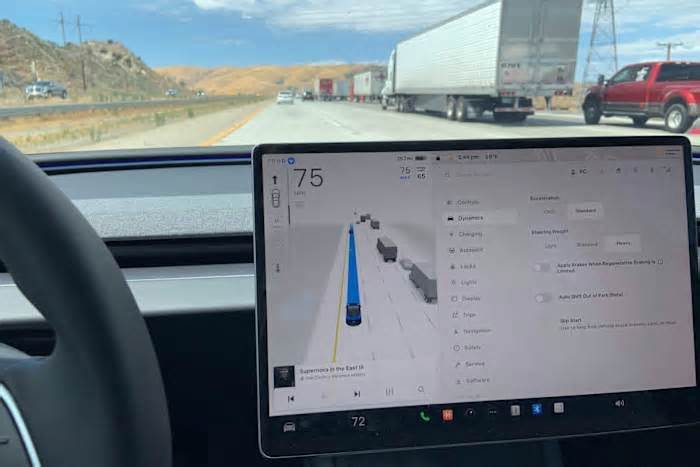
Marslink? SpaceX Wants to Develop a Version of Starlink Around the Red Planet
- by Gizmodo
- Nov 11, 2024
- 0 Comments
- 0 Likes Flag 0 Of 5

— Spaceflight Now (@SpaceflightNow) November 7, 2024
Earlier in September, SpaceX launched its 7,000th Starlink satellite to orbit as part of its growing internet constellation. Starlink is currently operational in 102 countries, with SpaceX planning expansions to reach even more regions worldwide. Overall, the company wants to build a massive constellation of 42,000 satellites in low Earth orbit.
SpaceX founder and CEO Elon Musk also has his eyes on Mars, with ambitious plans to not only send human crews to the Red Planet but to eventually “colonize Mars” and build permanent habitats across its rough terrain. It comes as no surprise then that SpaceX would want to expand its network of internet satellites to the other world.
The NASA presentation included two other proposals from Blue Origin and Lockheed Martin. As part of its proposed plan for a relay network around Mars, Blue Origin suggests using its Blue Ring orbital tug, which is designed to provide hosting, transportation, refueling, data relay, and logistics, as well as in-space cloud computing. The company is getting ready to test Blue Ring as part of the DarkSky-1 (DS-1) mission, which is sponsored by the Pentagon’s Defense Innovation Unit. Although the exact launch date has not been specified yet.
For its proposal, Lockheed Martin suggests using MAVEN (short for Mars Atmosphere and Volatile EvolutioN). The NASA spacecraft, built by Lockheed Martin, launched in 2013 to study Mars’ atmospheric loss. To facilitate communication, the MAVEN spacecraft would be transferred to a communications orbit and operate similarly to NASA’s network of radio antennas, the Deep Space Network.
The presentation shows that NASA plans to rely heavily on commercial partners for future Mars exploration, hoping to use private companies to help the space agency establish a sustainable, long-term human presence on the Red Planet.
NASA is also working on developing its own laser-based communication to deep-space destinations, experimenting with optical communications systems that can deliver data using photons of light. Getting to Mars is only half the battle, the real challenge is building an infrastructure that can support future human missions to the Red Planet.
Please first to comment
Related Post
Stay Connected
Tweets by elonmuskTo get the latest tweets please make sure you are logged in on X on this browser.
Sponsored
Popular Post
Tesla: Buy This Dip, Energy Growth And Margin Recovery Are Vastly Underappreciated
28 ViewsJul 29 ,2024






 Energy
Energy



















